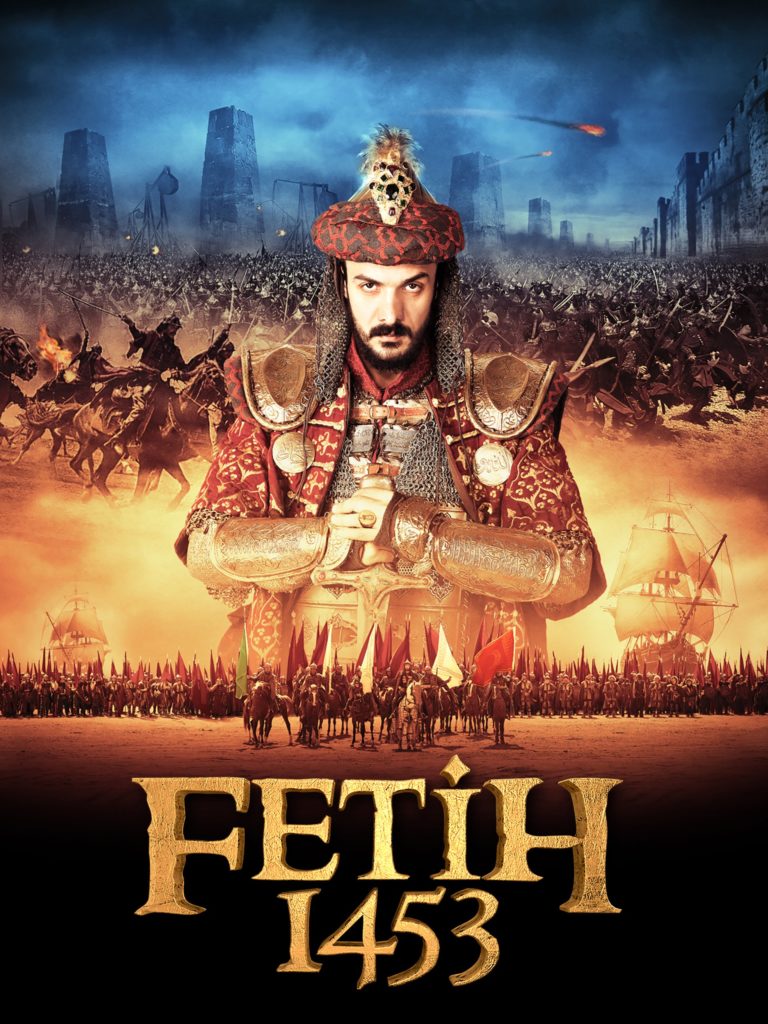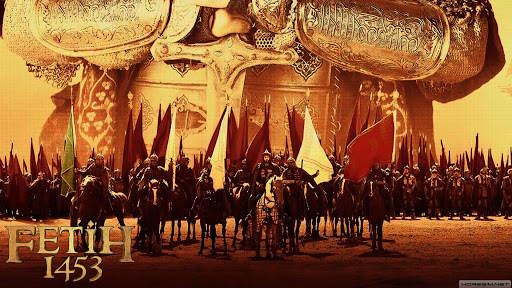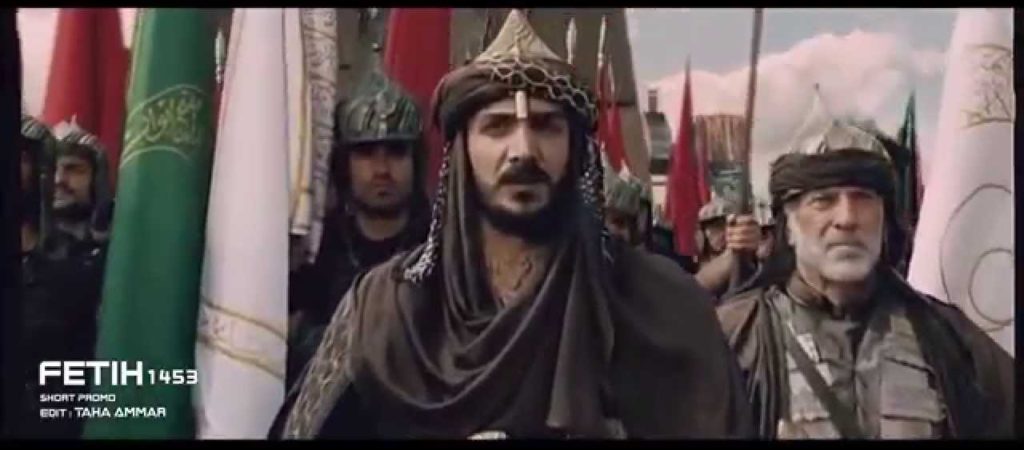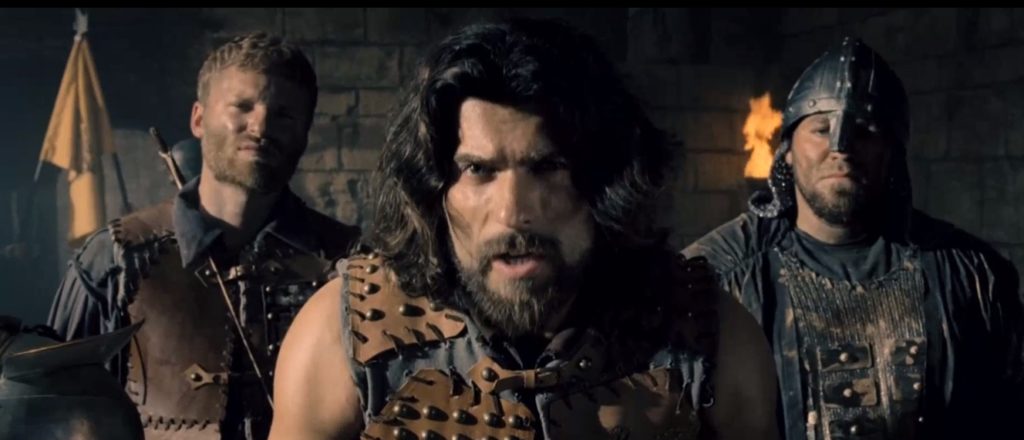Fetih 1453
Battle of 2 Empires – Fetih 1453 2012 Film Budget, Box Office, Verdict, Release Date, Detail (Directed by, Starring by, Writer) and Story Overview

Watch Free Full Movie Online in Urdu/Hindi Dubbed
Detail
- Budget: $18.2 million
- Box Office: $61.2 million
- Box Office Verdict: Hit
- Release Date: 16 February 2012
- Directed by: Faruk Aksoy
- Starring by: Devrim Evin, İbrahim Çelikkol, Dilek Serbest
- Writer: İrfan Saruhan
Movie Overview
There are 15 political techniques utilized by the Sultan Muhammad Al-Fatih to vanquish the city of Constantinople. This examination utilizes enlightening subjective research utilizing Roland Barthes semiotics hypothesis to know the significance of signification, implication and legend in film. The object of research was the film “Skirmish of Empires Fetih 1453” coordinated by Faruk Aksoy with the focal point of breaking down the political procedure of Sultan Muhammad Al-Fatih as a scene in the film “Clash of Empires Fetih 1453”. Subside Schroeder’s political procedure was utilized to decide the location of political technique. The discoveries of the scene will be broke down utilizing semiotics hypothesis ti locate the significance of indication, undertone and legend.
The film opens in Medina during the hour of the Islamic prophet, Muhammad (year 627). Abu Ayyub al-Ansari tells different sahabas that Constantinople will be vanquished by a favoured leader and armed force.

The story moves unexpectedly to the fifteenth century. Sultan Muhammad al-Fatih was given the royal position by his dad Murad II when he was 12; he learns of his dad’s demise while overseeing the Sanjak of Saruhan. This causes him much despondency and makes ready for his rising to the honoured position once more, after the demise of his sibling Fathıl IV. At the point when Sultan Mehmet had first risen the honoured position, he was additionally 12 years of age. Murad II, choked by the political threatening vibe of his margraves and viziers, surrendered the position of royalty because of the effect of his profound anguish brought about by his cherished child Mohamed’s passing and enthroned Mehmet. Amazing Vizier Halil Pasha, who impacted the Janissaries and the state, was disappointed as a result of this circumstance. He was particularly bothered with Sultan Mehmet showing that Constantinople’s triumph is fundamentally basic. He made Sultan Murat acquire the royal position again fully expecting the chance of crusaders possessing Ottoman regions by exploiting Mehmet. Mehmet was suspended from the royal position and sent to the Sanjak of Saruhan.
Presently, Mehmet prevails to the royal position again and is considerably increasingly ground-breaking. His need target is as yet the success of Constantinople. He picks up motivation from the expressions of Muhammad: “Constantinople will unquestionably be prevailed. What a favored administrator is its and what a favored armed force is its military.”
He works out everything that will take him to the objective. At the start, Mehmet concludes that he should live in harmony with touching nations until he makes the arrangements for his battle. He sends flag-bearers to the Papal States, to the Kingdom of Hungary, to the Serbian Despotate, to the Kingdom of Poland, to the Republic of Genoa and to the Republic of Venice and advises them of his expectation to live in harmony. He reestablishes the dockyard of Gallipoli and due to this activity, 100 galleys can be produced there in a year. In the interim, the Byzantine Emperor Constantine XI Palaiologos imagines that Sultan Mehmet is unpracticed and ailing in prescience. Constantine requests overwhelming assignments, attempting to use to further his potential benefit his ownership of the hostage Prince Orhan. Constantine’s fundamental expectation is to make Sultan Mehmet lose his notoriety by yielding to his requests. Sultan Mehmet seems to acknowledge his requests, however, this is only a methodology of misdirection.

When the updates on Karaman’s resistance is gotten, Ottoman armed forces set out for Akşehir. Karamanoğlu Ibrahim was not expecting such a forceful armed force. He requests harmony. Sultan Mehmet acknowledges the harmony since he doesn’t need his armed forces to be hurt pointlessly. After the military campaign, on the arrival venture, a gathering of janissaries face the state tent and request instalment. They had not really occupied with the fight. Accordingly, Sultan Mehmet conveys enthronements. He additionally sends into ousting the janissary ace Kurtçu Doğan. The janissary was a partner of Grand Vizier Halil Pasha. With this occurrence, Mehmet appropriately gains territory over his militaries.
Following his arrival to Adrianople, Mehmet sends an ambassador to Emperor Constantine and he announces that he will no longer send the endowment for the proceeded with imprisonment of Orhan. Following this occurrence, Mehmet begins to fabricate the Boğazkesen (Rumelian) Fortress over the Anatolian Fortress. He completely expects to take up arms against the Byzantine Empire.
On 29 May 1453, the Byzantine fighters on the defences are overpowered while confronting Sultan Mehmet and a huge number of Turkish troopers.

This film recounts to the narrative of the Life of Mehmed II…the Fall of Constantinople…well, you don’t need to be a student of history to understand the extraordinary bending of History. I watched this film with the best aims, I needed to like it since this was the first occasion when that such a chronicled occasion as the Fall of Constantinople was portrayed on the big screen. In any case, toward the finish of the film, the general inclination was tepid. I might want to pass judgment on this film both as a bit of workmanship and as a bit of history telling.. Production was acceptable. There was a decent exertion in portraying Constantinople with embellishments, and credit ought to be given to the ones liable for this. The “flying creature’s view” shots of the city were noteworthy, Hagia Sophia, Hippodrome, Palaces, the Gates..all can be handily contrasted with shots of Rome in Gladiator or the shots of Babylon in Alexander. In any case, there were some hazardous “green foundation” shots where the embellishments were poor and phoniness was self-evident, particularly in shots were actors were executed. The content was normal, not very convoluted, held extremely simple..but devoted to the Ottomans’ place of view..and the direction..well, it was normal to terrible, with ungainly lopsided characteristics and holes. This, in blend with some awful acting, exacerbated the situation, particularly for the principal half of the film. Another issue I might want to note is the supreme miscast for the film. The actors picked to depict certain characters were intentionally chosen. Somebody could undoubtedly observe the great and respectable Mehmed II, and the “heartless, practically sinister” face of Emperor Constantine XI Palaiologos. The second 50% of the film was progressively pleasant for me. The fights were OK and, as I have just referenced, it was ideal to see finally in a film the Siege of Constantinople, as Hollywood demands to portray just the Crusades in Jerusalem, the Battles of Joan of Arc and the engagements of Robin Hood. In any case, I can’t resist yet pass judgment on the film here to the extent the history portrayal is concerned…and this delineation couldn’t be progressively off base… Obviously, from the Ottoman perspective, there were such a large number of Turkish legends that recognized either with their activities of valour, or their demise. In any case, why this narrating is kept uneven? For what reason has it stayed quiet that the city had just 7,000 fighters safeguarding it? For what reason has it stayed quiet that the Ottomans entered the city from a little, unguarded door? For what reason has it stayed discreet that Giustiniani was injured by a cannonball? Why, coincidentally, would he say he is portrayed as malicious? Also, why we don’t hear anything about the Emperor’s last substitute the fight? This is the thing that irritated me the most…Constantine Palaiologos was battling close by his soldiers. In the wake of understanding that the city is damned, he tore his magnificent suite and nobody could recognize him from the remainder of the warriors. He passed on battling, protecting his city, his kin and his faith…he has portrayed all through the film yet his last stand was by one way or another unexpectedly overlooked by the filmmakers…and last, however not least..without any expectation to censure the Turks yet with all due regard the last scene of the film was somewhat funny..it is recorded in History what occurred after the catch of the city, what number of were oppressed and tortured..Mehmed II did without a doubt offer opportunity to Christians, yet there is no word in the film about the speared and tormented Christians, or the way that the Emperor’s head was placed in the Hippodrome.. By and large, my rating is 6/10 for the exertion and some very great battle scenes.
Keywords: Semiotics Roland Barthes, Movie Battle of Empires Fetih 1453, Muhammad Al-Fatih, Political Strategy




